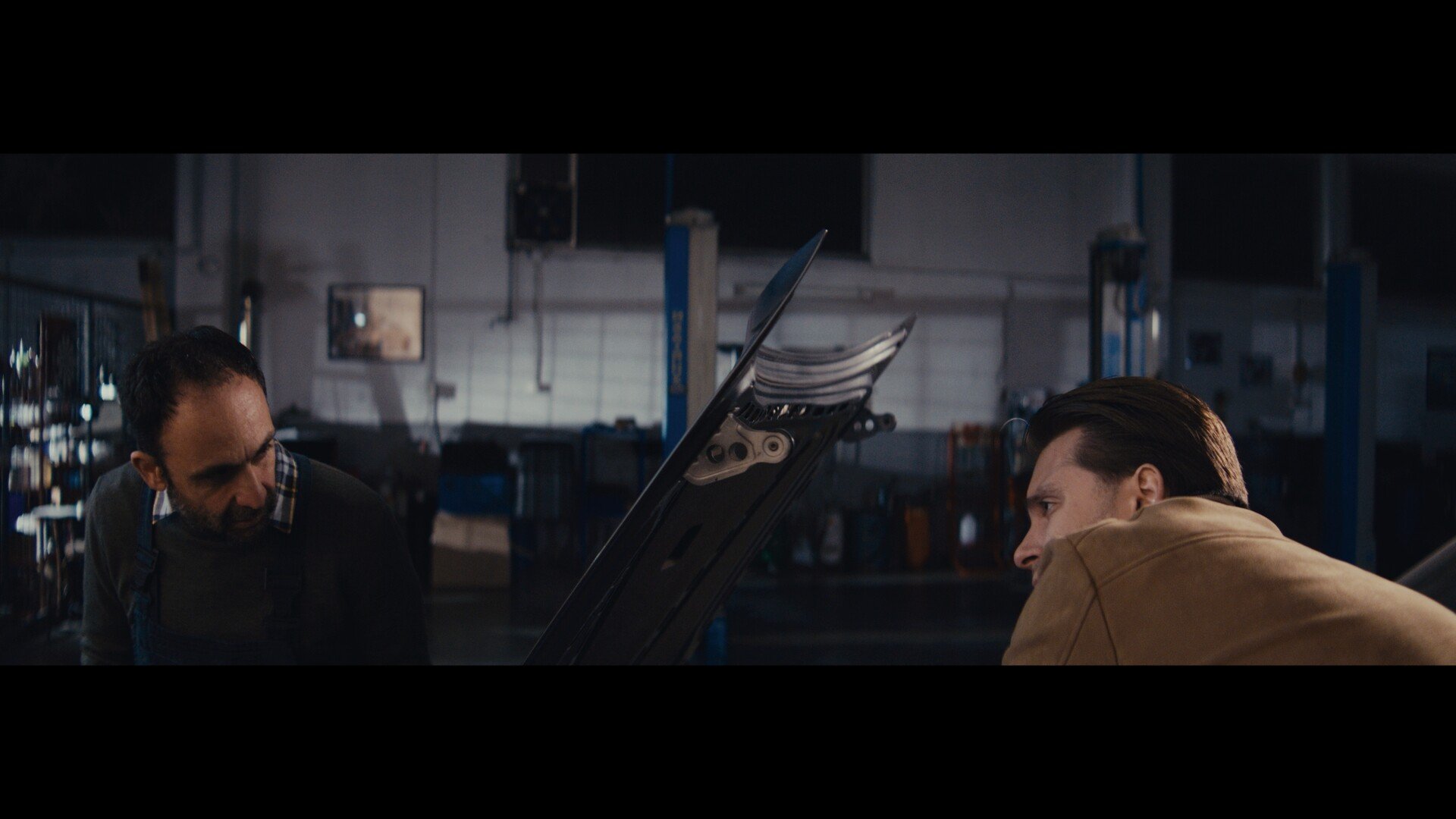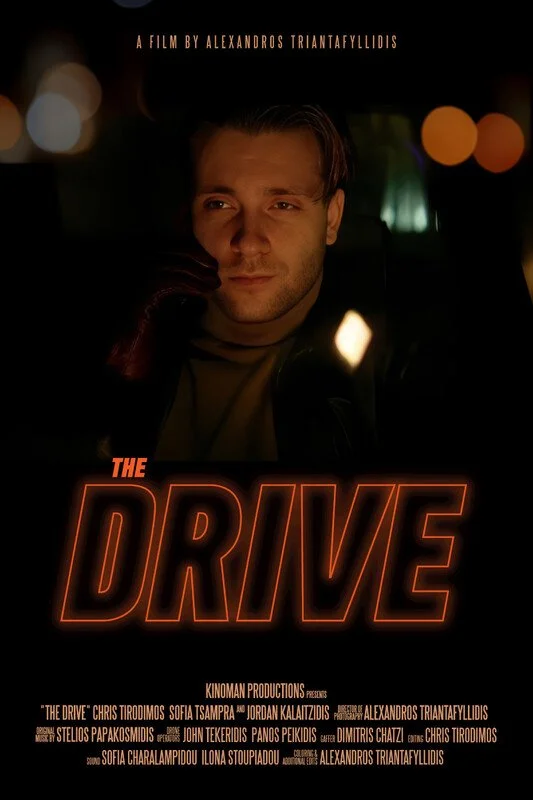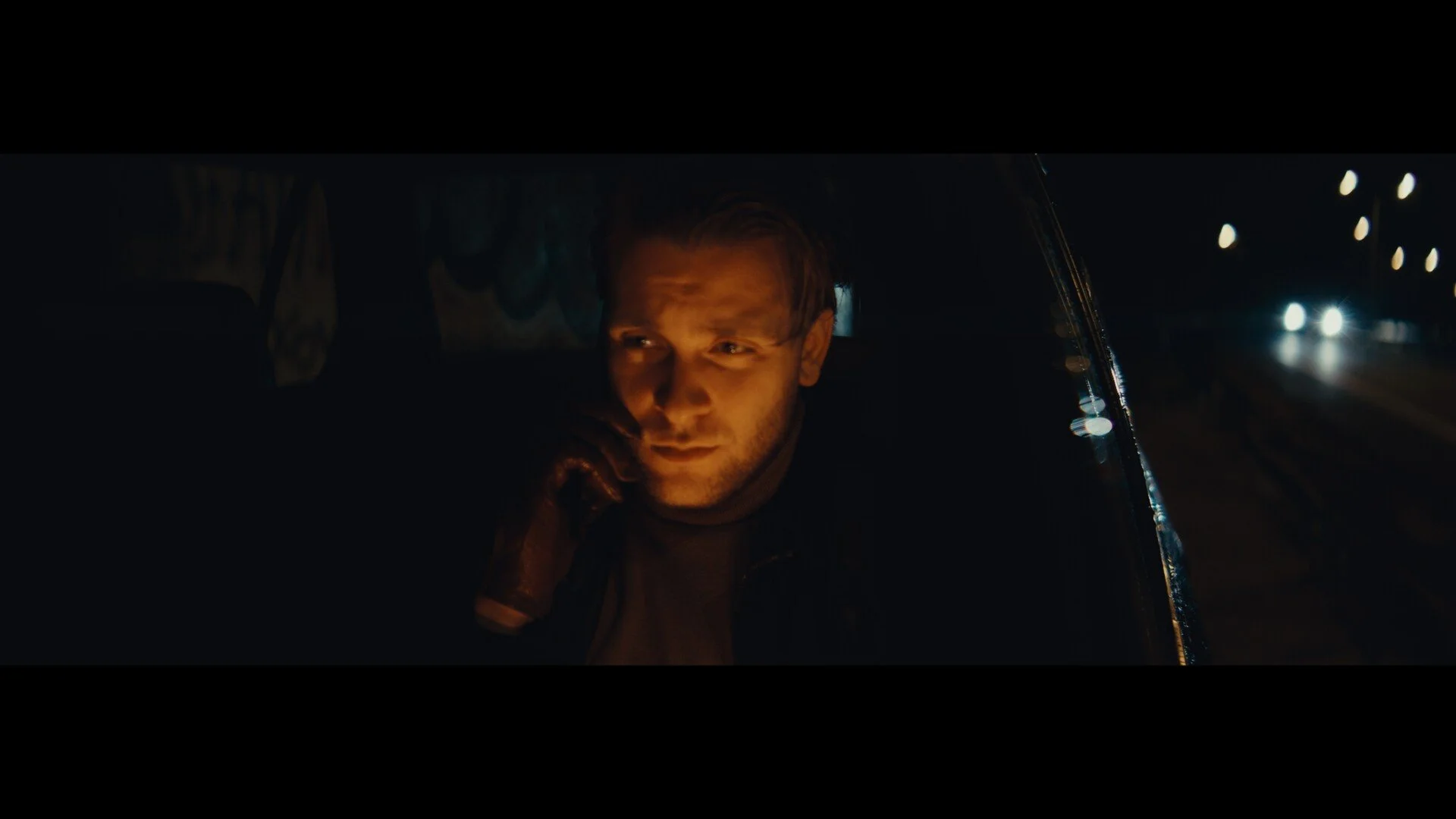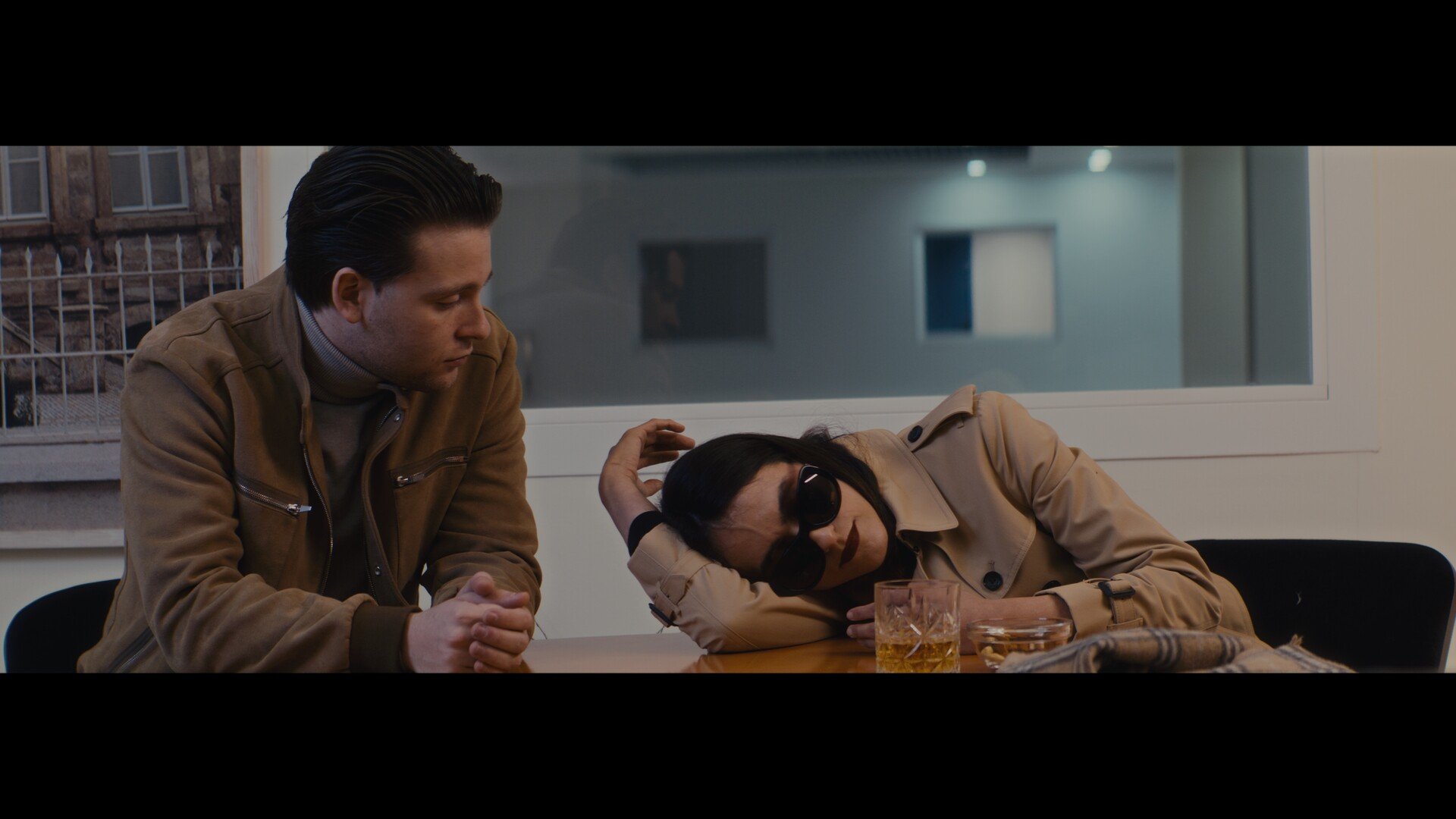Alexandros Triantafyllidis on Blurred Truths and the Making of The Drive
Welcome Alexander, we are very excited to have you today with us to discuss about your work.
Who is Alexandros Triantafyllidis and how did the passion for creating begin?
I am a Greek filmmaker and cinematography student of Hellenic Open University. I am based in Kavala, with a professional background in plastic surgery. My creative drive began long before I ever picked up a camera. I used to spend many hours in the projector room of my uncle’s cinema and i fell in love with the art. In medicine, I learned precision, patience, and the importance of observation. In cinema, I found a way to channel those same qualities into storytelling, shaping images that invite the viewer to look closer. am fascinated by the human potential and its place in the universe. Storytelling, for me, is a way of dissecting the human condition with both technical rigor and emotional openness. Whether in the operating room or behind the camera, the impulse is the same: to notice what others might overlook, and to give it form. Filmmaking allows me to explore the spaces between what is seen and what is felt, and to offer audiences the same kind of layered experience that first drew me toward the art.
Can you tell us a bit about your previous work?
Before The Drive, I worked across both fiction and documentary, often blending the observational with the dramatic. My short documentary “Chords of the Province” examined music, identity, and friendship in rural Greece, using real conversations and performances to create a portrait that was both intimate and universal. My first ever short film was only 3 minutes long and explored the theme of human loss. My second short film was an adaption of a novel by Julio Cortazar, titled “la noche boca arriba”. In all my work, I’m drawn to stories where the external plot mirrors an internal transformation. Sometimes this takes the form of a thriller structure, where suspense is driven as much by emotional stakes as by physical events. Careful framing, controlled pacing, and lighting choices that echo the characters’ inner states, are the basis of my visual storytelling.Whether I’m working in a purely fictional mode or weaving documentary elements into the fabric of a story, my goal remains the same: to invite viewers into a space where they can question, empathize, and perhaps recognize part of themselves in the images before them.
The Drive begins as a simple tailing job but quickly unravels into something far more ambiguous. What was the seed of the idea, and how did it evolve into a meditation on perception and truth?
Sometimes driving for hours can be a meditating experience and the destination is of no importance. A wrong turn or a slow reflex can twist and shape our paths. It is the same with our everyday choices. The idea for the film began with a single image: a man in his car, following someone through the night, unsure if he is in control or already caught in someone else’s plan. From there, the story evolved into something more layered. I wanted the narrative to operate on two levels: the surface tension of the tailing sequence, and the deeper ambiguity beneath it, where each character’s motives remain obscured. The structure encourages the audience to inhabit the same uncertainty as the protagonist, often reminding us of the film noir form. For me, The Drive is less about finding the truth than about confronting the fact that truth itself is unstable. In life, as in the film, what we see is shaped by where we stand, what we believe, and what we fear. The act of following someone becomes a metaphor for chasing meaning — a pursuit that is as much about our own perspective as it is about the object of our attention.
CONVERSATION ABOUT: '‘The Drive''
The uncle–nephew dynamic feels loaded with subtext. Was this relationship inspired by real-life observations, literary influences, or something else entirely?
The uncle–nephew relationship was built from observation of families where affection and control are intertwined, where loyalty can be both a comfort and a trap. It’s not drawn from a single real-life source, but from patterns I’ve seen in Greek society, where generational ties often carry unspoken debts. I wanted the uncle to feel both familiar and unsettling — someone who, on the surface, is supportive and protective, yet whose influence slowly reveals itself to be conditional. Literary influences played a part , for example the weight of tradition and expectation in modern Greek drama. The dynamic is also a mirror for the film’s central theme: the difficulty of seeing clearly when emotion clouds judgment. In the same way that the protagonist struggles to read the truth in his surveillance target, he struggles to fully see his uncle’s role in his life. The result is a relationship where trust and doubt coexist, and where the audience, like the nephew, must decide whether to lean into loyalty or to step away from it entirely.
As both a director and cinematographer, you control the visual heartbeat of the film. Which shots or sequences were the most critical to nailing the mood? Did your medical background— especially in plastic surgery, where observation and precision are crucial—shape your visual style or attention to detail in storytelling?
The interplay between the warm, enclosed spaces and the cool, distant blues of the city lights created a visual rhythm that reflected the characters’ internal states. There are moments of connection contrasted with an sense of detachment. The framing of a glance, the rhythm of a tracking shot, the way reflections distorted in glass — all of these became storytelling tools. Of course i decided to shoot the film in wide anamorphic, a visual choice embraced by many cinematographers. Both the out of focus shots and the expressionistic frames were my first visual choices. In surgery, precision is non-negotiable; every movement has purpose, and the smallest details can alter the outcome. I carried that same discipline into my filmmaking. Light placement, lens choice, even the balance of negative space were treated with the same focus as surgical preparation. It’s an approach that doesn’t just aim for visual beauty, but for emotional accuracy — ensuring that every image supports the tension, ambiguity, and psychological texture that define The Drive.
As a filmmaker in Greece, what unique creative or logistical challenges did you face in bringing The Drive to life?
Making an independent film in Greece means working with both the beauty and the constraints of the environment. On the creative side, there’s an abundance of atmospheric locations, especially here in Kavala, but securing permissions, especially for high-security areas like airports, required careful negotiation, strict scheduling, and the ability to adapt on the spot. Budget limitations were an ever-present factor, pushing us toward a lean, efficient production. We often had to maximize minimal resources — shooting with a small crew, repurposing equipment setups, and working quickly to capture fleeting lighting conditions. In many ways, those constraints sharpened the film’s identity. I believe the biggest success of the film was working with non professional actors, who were willing to give their best performance for free. Despite the logistical hurdles, the collaborative spirit was strong, and the limitations often inspired more creative solutions. The result was a film that feels precise yet organic — born from a process where every choice was deliberate, and every obstacle became part of the story’s DNA.
Without spoilers, what emotional aftertaste do you want the audience to leave the theater with?
I want the audience to walk away with a sense of fulfillment, yet an uncertainty that the boundaries between truth and perception blur. Not the frustration of something missing, but the quiet tension of knowing that reality is never as fixed as it seems. Ideally, they leave still replaying the film in their minds, reassessing moments they thought they understood, and wondering about the unseen parts of the story. That reflective state — where the viewer’s own experiences color their interpretation — is, for me, one of cinema’s most powerful effects. The main protagonist can easily be identified as the next door guy, so the aftertaste should be both intimate and slightly disquieting, like a familiar street that suddenly feels different at night.
In future projects, do you plan to explore similar genre intersections, or are there other genres you're eager to explore?
I’m drawn to genre intersections because they allow emotional depth to coexist with narrative tension. Thrillers, in particular, offer a strong structural framework while leaving room for subtle character work and thematic exploration. The Drive sits at that intersection, combining psychological drama with elements of suspense, and I find that balance creatively satisfying. That said, I’m equally interested in pushing toward more dreamlike and non-linear storytelling in future work. I want to experiment with narratives where time and memory are as fluid as the camera movement — stories that function as both psychological portraits and immersive sensory experiences. I would gladly try to create stories in a sci fi or post apocalyptic world, when i will have the access to a bigger budget. I’m committed to continuing the exploration of moral ambiguity, human perception, and the way environment shapes character.
If you could sum up the film’s core question in a single sentence that would make someone want to watch it immediately, what would it be?
When the world blurs around you, can your soul still see clearly?
This marks the conclusion of the interview featuring our esteemed artist, Alexander Triantafyllidis. Our community is growing steadily, with a continuous influx of skilled filmmakers and screenwriters joining us. Explore our other interviews, and consider scheduling one for yourself to showcase your creative endeavors.






